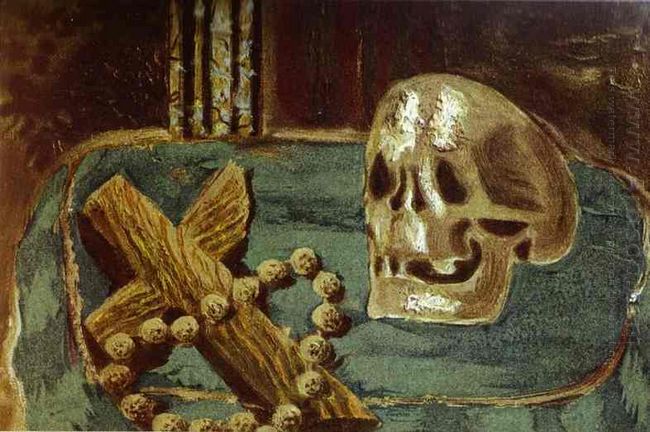Life and death is an eternal theme of art. In retrospect to 1600s, the Dutch produce a lot of paintings to demonstrate the fleeting nature of life and discuss the meaning of life, which is called “vanities” by art historians. Juxtaposing wealth and riches of life with the temporal things like food and flowers characterize this kind of painting. Juan de Valdés Leal, a Spanish painter and etcher of the Baroque era, also had a preoccupation with it.

From a panoramic perspective, Juan de Valdés Leal’s Vanitas is full of a jumble of objects with a cherub looking over them and a man hiding behind curtain. In the foreground to left, a skull crowned with a laurel wreath, which is usually crowns those who have achieve great success. Whatever a man gained during his life, he has to face death like any other people. Then come two flowers: one in full bloom whilst the other already dying, reflecting the flourishing and dying of life. It is the end of life. Let us retrospect the time before death according to the oil painting. These objects can be divided into three groups: Firstly, dice and playing cards, suggesting a luxurious life wallow in games of chances. Secondly, a cascade of medal, money and jewelry leads up to an elaborate crown, indicating honors, wealth and power. Finally, books and scientific instruments demonstrating pursue for knowledge, which can also be regarded as means to achieve these honor.
A cherub sit to the left and blow a bubble, whose existence is even shorter than a second although iridescent beautiful. Life just resembles a bubble, always come to an end nevertheless how beautiful it used to be. In the background, a man drew back a heavy curtain with one hand and is pointing at a painting depicting the last judgement, when Christ will appear again to judge who would be accepted into paradise and condemned into Hell. The universe will end, and with it time itself. Life is fleeting, and everything that we cherish and strive for is ultimately died away with us.